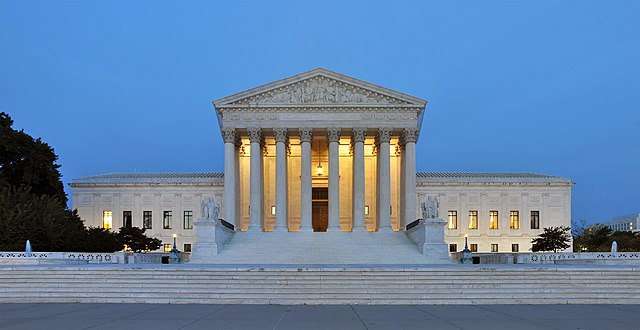Yesterday, the United States Supreme Court issued its decision in Concepcion v United States, a criminal case involving the First Step Act. In the case, the Supreme Court had to decide “whether a district court adjudicating a motion under the First Step Act may consider other intervening changes of law … or changes of fact … in adjudicating a First Step Act motion.” The Supreme Court said yes.
What happened in Concepcion v United States?
In 2007, Carlos Concepcion pleaded guilty to one count of distributing 13.8 grams of cocaine. In 2009, a federal judge sentenced Mr. Concepcion to 238 months in prison. His lengthy prison sentenced was the product of two things. First, it focused on the 100-to-1 disparity between crack and powder cocaine offenses at the time. Second, it focused on a “career offender” enhancement that more than quadrupled Mr. Concepcion’s sentence.
First, at the time of Mr. Concepcion’s sentence, federal law included a 100-to-1 disparity for cocaine sentencing. If a judge or jury convicted you of distributing 5 grams of crack cocaine, you faced a mandatory prison sentence of between 5 and 40 years. But, because of the 100-to-1 disparity, you could have 500 grams of powder cocaine and still face the same sentence.
Second, at the time of Mr. Concepcion’s sentence, the court treated him as a “career offender” based on his criminal record. His “career offender” status raised his sentencing guidelines range from 57 to 71 months to 262 to 327 months. But, after his sentence, one of Mr. Concepcion’s prior convictions was vacated, which would have made it so he was no longer considered a “career offender.”

How does the First Step Act apply to Mr. Concepcion?
In 2018, Congress passed and former President Donald Trump signed the First Step Act. Although a lot of the discussion around the First Step Act focuses on its Time Credits Program, another part of the law retroactively applied the Fair Sentencing Act of 2010. The Fair Sentencing Act reduced the 100-to-1 ratio discussed above all the way to 18-to-1. And the First Step Act allows that reduction to apply to past cases.
Specifically, the law says that “[a] court that imposed a sentence for a covered offense may … impose a reduced sentence as if sections 2 and 3 of the Fair Sentencing Act of 2010 … were in effect at the time the covered offense was committed.” More simply, the First Step Act allows judges to make someone’s sentence shorter based on recent changes in the law. This is a really good thing.
What did the Supreme Court decide in Concepcion v United States?
In Concepcion v United States, the Supreme Court was faced with the issue of “whether a district court adjudicating a motion under the First Step Act may consider other intervening changes of law (such as changes of the Sentencing Guidelines) or changes of fact (such as behavior in prison) adjudicating a First Step Act motion.” More simply, the Supreme Court had to decide what judges could consider when people file motions to change their sentence under the First Step Act.
In a 5-4 decision, the Supreme Court ruled that courts have broad discretion when deciding a motion under the First Step Act. Not only can they consider changes in law like the Fair Sentencing Act. They can also consider changes in law like the Sentencing Guidelines. And, going even further, they can also consider changes in facts, including changes to someone’s status as a “career offender” and someone’s conduct in prison since his or her original sentence.

The Takeaway:
In Concepcion v United States, the United States Supreme Court issued its first decision on the First Step Act. It ruled that courts can consider a lot of different things when possibly changing a sentence under the First Step Act. Courts can consider changes in the law, changes in facts and any other thing the judge deems reasonable and relevant. The decision in Concepcion v United States was a positive one for incarcerated people.
While you’re here, please take time to read about the EQUAL Act. While Congress reduced the 100-to-1 disparity for cocaine sentencing to 18-to-1 in 2010, that meaningless 18-to-1 disparity still exists today. But, with the EQUAL Act, that 18-to-1 disparity would disappear, going all the way to 1-to-1.






